House buyers looking to snap up a new-build home in New Zealand are likely to have better success on the fringes of Christchurch and Auckland than anywhere else, new research suggests.
Analysis of New Zealand’s housing stock by OneRoof and its data partner Valocity has identified the regions and suburbs with the biggest share of homes built since 2010.
The housing market with the highest percentage of new homes was Selwyn in Canterbury, where almost one in five properties are less than 10 years old.
Papakura, in South Auckland, and Waimakariri, in Canterbury, had the next biggest share of new homes, with 15.18 percent and 14.09 percent of their total housing stock built since 2010.
Start your property search
- READ MORE: 700,000 Kiwi houses just aren't doing their job
New builds represented more than five percent of total housing stock in just 20 of the 72 territorial authorities studied by OneRoof and Valocity.
New builds represented almost one tenth of all housing stock in Waikato (9.79 percent), Queenstown (9.22 percent), and Auckland’s Rodney and Franklin districts (9.02 percent and 8.97 percent).
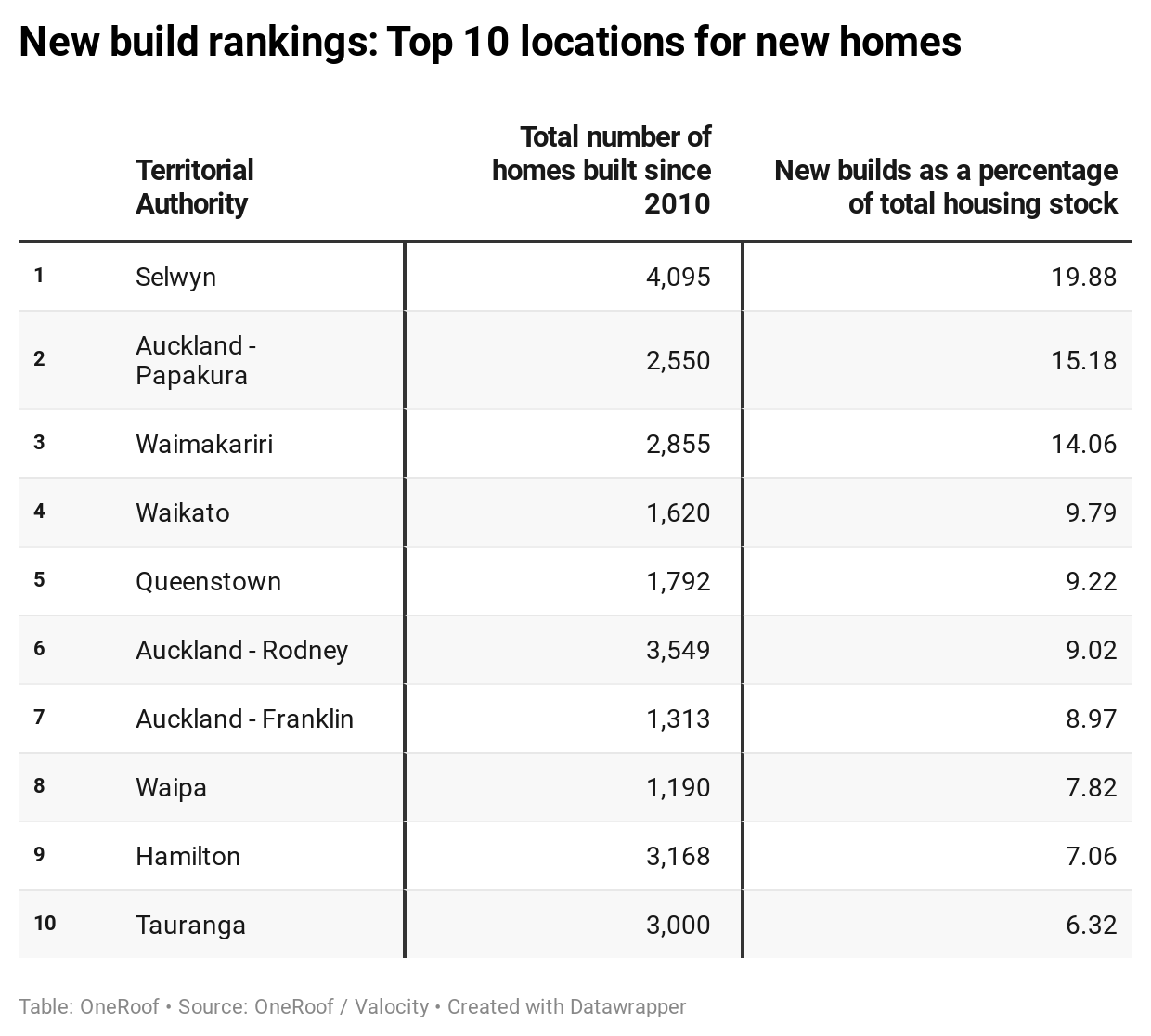
OneRoof editor Owen Vaughan says: "The research shows that since 2010 new build activity has largely taken place in growth areas on the fringes of main urban centres. The higher share of new builds in Selwyn and Waimakariri are the result of the rebuild effort post-earthquake.
"Queenstown's place in top ten is not surprising given the influx of new building activity that took place on the back of surging house prices and a booming tourism economy.”
He adds: “The size of new homes varied according to areas, with homes outside the main urban centres averaging 181sq m on a 656sq m site whereas homes were bigger in larger urban centres homes, at 190sq m, and on smaller 500sq m sites.”
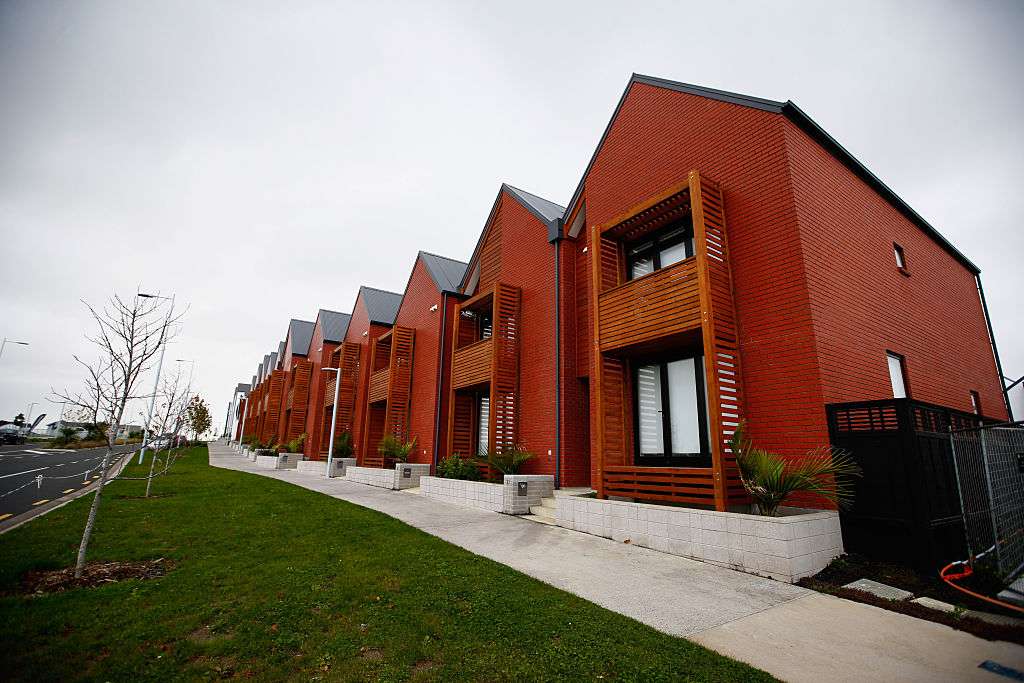
Hobsonville Point in Auckland is one of several master-planned communities that have come on stream in the last decade. Photo / Getty Images
Vaughan says the data was encouraging as it showed new homes had been built to meet demand for housing in growth areas, and also suggests that “fears of new housing stock suffering major value corrections across much of the country are unfounded, although the speculative nature of building in Queenstown and the challenges its tourism economy faces could put downward pressure on that market”.
Increasing burden
James Wilson, director of valuation and innovation at Valocity, says the biggest reveal from the research was that many Kiwis are living in homes that may require heavy maintenance to bring them up to scratch.
“If much of the country has only seen low percentages of new housing stock the ageing housing stock will begin to be an increasing burden, as pressure builds to upgrade homes and make housing in New Zealand more energy efficient and sustainable."
While older homes are thought to enhance the character and value of the neighbourhoods they are in, many are cold, draughty and mouldy and in need of improvement. Renovating can be an expensive business which some can’t afford and cold and draughty homes are cited as contributing factors to New Zealand’s high respiratory illness and hospitalisation rates, costing around $6 billion a year.
Wilson says the areas with the greatest share of older homes - those built before the 1950s - are Dunedin, Grey District and Wellington.

Wellington has a high proportion of older, character homes. Photo / Getty Images
In Wellington new homes built since 2010 comprised 2239 of the housing stock while pre-1950s homes were eight times more prevalent at 18660.
Just over 9270 homes were built between the 1950s to the 1970s, 10672 were built between the 1970s to the 2000s, and only 174 for the 2000s to 2010.
Councillor Fleur Fitzsimons, Wellington City’s housing portfolio leader, says Wellington has a housing crisis.
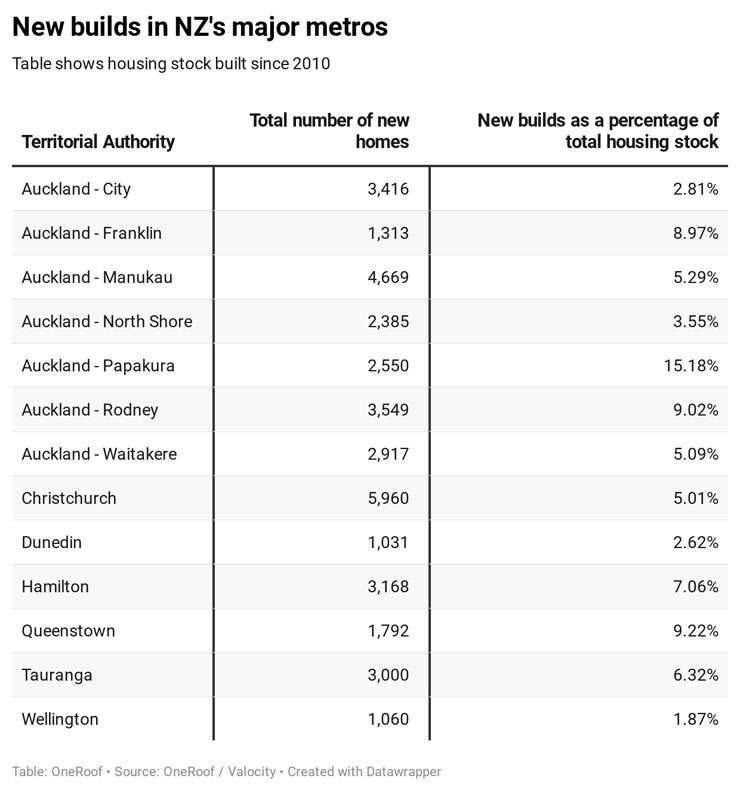
“We don’t have enough houses for everyone who lives here and too many of them are cold and damp – this makes heating them expensive and occupants sick.”
While some are beautiful, older character houses unless significant investment has been made they can be cold, damp and mouldy, she says.
“Our hospital doctors tell us there are unnecessary illnesses and hospital admissions of children and elderly people because of the damp, cold housing in our city. The Council welcomes the new legal requirements which will make housing safer.”
Highly desirable
Changes to legislation from central Government include requirements for heating, insulation, ventilation and draught-stopping in rental housing.
“These new requirements are particularly important for Wellington character houses lived in by thousands of renters across the city and will really make a difference.”
Council spokesman Richard MacLean said old houses, if they haven’t recently been restored or transformed, can also have dodgy piles or other foundations that will likely not perform well in a large earthquake, and unreinforced brick masonry chimneys can collapse.
“On the other hand, old houses are highly desirable to a lot of people, especially if they can be, or have been, renovated and insulated.
“Old houses contribute hugely to the character of the city which is why the council has various heritage rules designed to stop them being knocked down.”
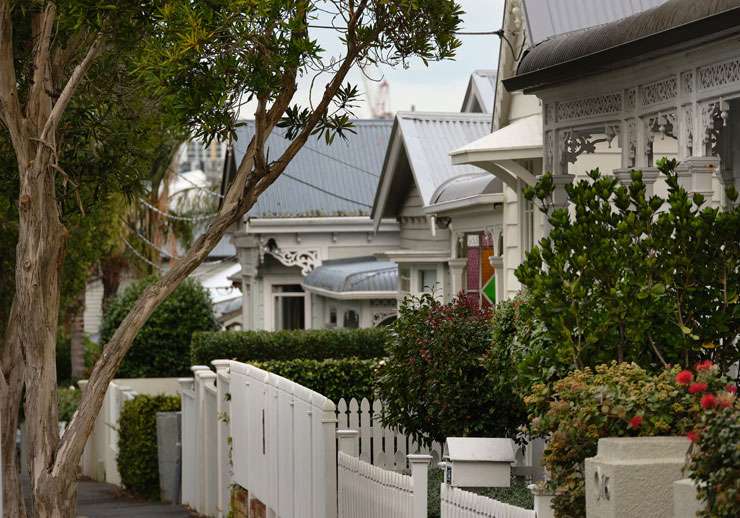
Older homes can require heavy maintenance. Photo / Ted Baghurst
But renovating can be expensive, he says.
“I just finished spending $200,000 on my old place in Newton and the money mostly went on foundations, rewiring, bathroom and plumbing, double-glazing, insulation and other basics.”
Dunedin has 2681 new builds compared to 17215 built before 1950, and 10669 built between 1950 to 1970. Nearly 8000 were built between 1970 to the 2000s, and 3678 were built between 2000 and 2010.
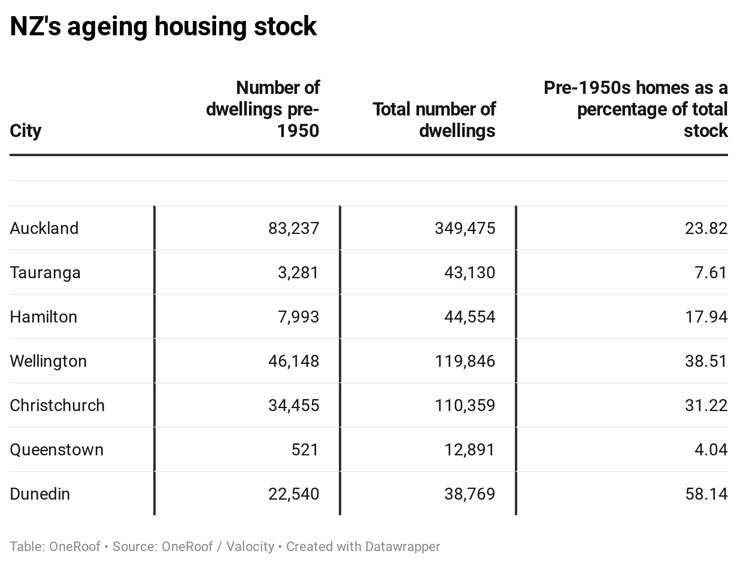
Dunedin City Council’s community development manager, Joy Gunn, says Dunedin has some “amazing” older properties that are well maintained and the council doesn’t have issues around older homes as long as they are maintained and improved where possible.
Rental buildings have to meet building and insulation standards and, again, as long as this is happening the homes are not concerning.
Health issue
Like other areas, Dunedin has schemes in place to help people. The council’s Warm Dunedin scheme, for example, allows homeowners to include the cost of insulation and heating on their rates which they can pay off over ten years.
The Government’s Warmer Kiwi Homes scheme covers 90 per cent of qualifying homes’ cost of underfloor and ceiling insulation, with the rest paid for by grants by local initiatives.
Warmer Kiwi Homes also covers up to $3000 for a heater in the main living room, Dunn says.
“Council also recognises that the lower South Island can be cold so offers a small grant to people who are struggling to pay their electricity bills, known as the Power Fund.”
The council also has an eco-design advisor who visits homes and gives advice on how owners can improve their home according to their budget.
“One of the recommendations from our Mayor’s Taskforce for Housing, which recognises older stock as a health issue, is to provide a navigator for people intending to build to assist in ensuring the process of getting a consent is as smooth as possible.”
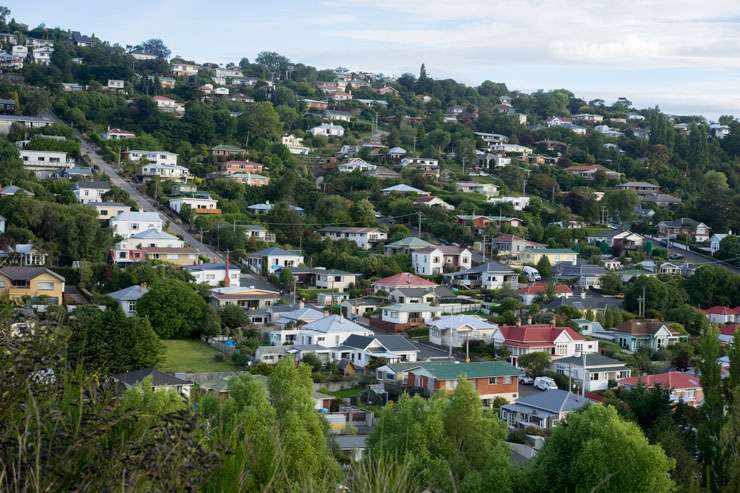
Dunedin is known for its Scarfie flats, turreted timber villas, thirties brick bungalows and mid-century block homes. Photo / Getty Images
The council also supports the Dunedin Heritage Fund which provides grants towards the repair and restoration of heritage buildings, many of which are part of the residential housing stock, she says.
Rules are in place to preserve and protect older homes as those from the 19th to the mid-20th century are an integral and distinctive element of the city.
“Many people know Dunedin for its Scarfie flats, turreted timber villas, thirties brick bungalows and mid-century block homes, all of which create Dunedin’s heritage appeal and distinctive character.”
‘Built to last’
Dunedin real estate agent, Nick Beard, of Nick Beard Cutlers Real Estate, says older homes, some dating back to the settlers, are what gives Dunedin its charm.
“I’ve sold a couple from the 1880s, 1890s, so that’s old. They’ve stood the test of time, a lot of them. They must have been built well to last that long.”
There are still plenty available to buy but older homes which have yet to be renovated can add a further $100,000 or more to the budget.
Grey District, on the West Coast of the South Island, of has only 347 new builds, according to the Valocity data, but 2433 pre-50s builds and a further 836 from the 1950s to the 1970s.
Deedee Daly, of Greg Daly Real Estate in Greymouth, has a range of older homes for sale, including a pre-1950s five-bed “complete the reno” on for $245,000.
“With properties in that price range I say to people they do need some work but they are habitable, people do live there now. A lot of those properties are getting snapped up by first home buyers or investors.
“Generally what would need to be done, I call it lipstick, so just a nice shading of lipstick applied, and sometimes it can be structural.”
Older homes were well-built with good timber from the coast so have good bones, she says, and can have multi-fuel fires for heating and some have retro double glazing.
Owner-occupied homes are generally well-looked after but Daly says after the new tenancy codes came in a flood of ex-rental properties came to the market from absentee landlords.
There are some new builds in Greymouth, she says, sometimes built on the site of older homes in very bad condition, but there are also heritage rules in place to protect historic homes.










































































